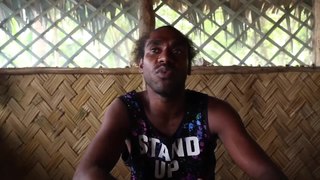West Uvean is a Polynesian outlier language spoken on the island of Ouvéa, in the Loyalty island group of New Caledonia, and in the capital of Nouméa.
Mwotlap is an Oceanic language spoken by about 2,100 people in Vanuatu. The majority of speakers are found on the island of Motalava in the Banks Islands, with smaller communities in the islands of Ra and Vanua Lava, as well as migrant groups in the two main cities of the country, Santo and Port Vila.
Iaai is a language of Ouvéa Island. It shares the island of Ouvéa with Fagauvea, a Polynesian outlier language.

Vanikoro is an island in the Santa Cruz group, located 118 kilometres to the Southeast of the main Santa Cruz group. It is part of the Temotu Province of Solomon Islands.

Alexandre François is a French linguist specialising in the description and study of the indigenous languages of Melanesia. He belongs to Lattice, a research centre of the CNRS and École Normale Supérieure dedicated to linguistics.

The Temotu languages, named after Temotu Province of the Solomon Islands, are a branch of Oceanic languages proposed in Ross & Næss (2007) to unify the Reefs – Santa Cruz languages with Utupua and Vanikoro, each a group of three related languages.
The Tikopia language is a Polynesian Outlier language from the island of Tikopia in the Solomon Islands. It is closely related to the Anuta language of the neighboring island of Anuta. Tikopian is also spoken by the Polynesian minority on Vanikoro, who long ago migrated from Tikopia.
Mota is an Oceanic language spoken by about 750 people on Mota island, in the Banks Islands of Vanuatu. It is the most conservative Torres–Banks language, and the only one to keep its inherited five-vowel system intact while also preserving most final vowels.
Lakon is an Oceanic language, spoken on the west coast of Gaua island in Vanuatu.
Koro is an Oceanic language spoken on Gaua island in Vanuatu. Its 280 speakers live in the village of Koro, on the south coast of Gaua.

Lo-Toga is an Oceanic language spoken by about 580 people on the islands of Lo and Toga, in the Torres group of northern Vanuatu. The language has sometimes been called Loh [sic] or Toga, after either of its two dialects.
Dorig(formerly called Wetamut) is a threatened Oceanic language spoken on Gaua island in Vanuatu.

Lemerig is an Oceanic language spoken on Vanua Lava, in Vanuatu.
Nume is an Oceanic language spoken on Gaua island in Vanuatu. Its 700 speakers live on the northeast coast of Gaua.
Löyöp is an Oceanic language spoken by about 240 people, on the east coast of Ureparapara Island in the Banks Islands of Vanuatu. It is distinct from Lehali, the language spoken on the west coast of the same island.
Lovono is a nearly extinct language of the island of Vanikoro in the easternmost province of the Solomon Islands. As of 2012, it is only spoken by four speakers; it has been replaced by the island’s dominant language, Teanu.
Tanema is a nearly extinct language of the island of Vanikoro, in the easternmost province of the Solomon Islands.

Lehali is an Oceanic language spoken by about 200 people, on the west coast of Ureparapara Island in Vanuatu. It is distinct from Löyöp, the language spoken on the east coast of the same island.
Volow is an Oceanic language variety that used to be spoken in the area of Aplow, in the eastern part of the island of Motalava, Vanuatu.
Proto-Temotu is the reconstructed ancestor of the Temotu languages of Temotu Province, Solomon Islands. It belongs to the Oceanic branch of the Austronesian languages.







